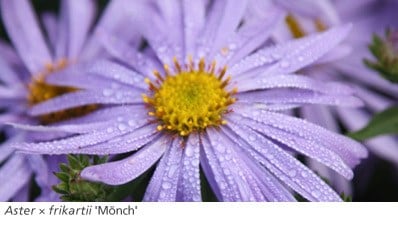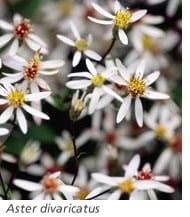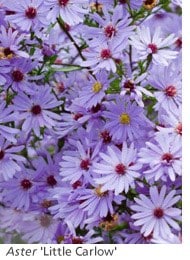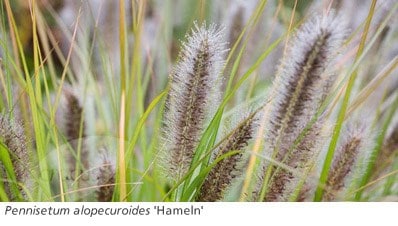Which aster?

 Heavy morning dews keep everything looking as fresh as a daisy in late summer and early autumn, but finding the right daisy in a sea of varieties is the key to success. Michaelmas daisies for instance, grow in North America, Asia and Europe in a variety of locations. Some are dry, some alpine and some positively marshy. For many years the most popular Michaelmas daisies, or asters, were selected forms of the moisture-loving New York asters (A. novi-belgii), which are used to boggy conditions. They struggled to perform well in many gardens, developing unsightly mildew, and this gave the whole tribe a bad name.
Heavy morning dews keep everything looking as fresh as a daisy in late summer and early autumn, but finding the right daisy in a sea of varieties is the key to success. Michaelmas daisies for instance, grow in North America, Asia and Europe in a variety of locations. Some are dry, some alpine and some positively marshy. For many years the most popular Michaelmas daisies, or asters, were selected forms of the moisture-loving New York asters (A. novi-belgii), which are used to boggy conditions. They struggled to perform well in many gardens, developing unsightly mildew, and this gave the whole tribe a bad name.
Simply the Best
However there are lots of asters that are undemanding and reliably perennial, even in dry gardens. These are the ones to grow. The finest of all is Aster x frikartii ‘Monch’ and this will flower from July until late September, producing large lavender-lashed flowers with neat yellow middles. The flowers are enhanced by good, dark-green foliage, which never gets diseased, and the stems are strong enough not to need staking, despite the fact that this plant curtsies a little. Give it a front of border position for it always looks pristine. 'Mönch’, named after a Swiss mountain, was one of a series bred in 1921 by the Swiss nurseryman Frikart. He used an alpine Himalayan species (A. thomsonii) and a drought-tolerant Italian aster (A. amellus). This very difficult cross, only successfully made by Frikart, Alan Bloom and Wolley-Dod, produced a bombproof handsome aster that will thrive in any garden.

Quite different in form, but equally robust, is ‘Little Carlow’ a bushy aster with fine foliage and sprays of lavender-blue flowers that appear from buds stippled in red. In September light this aster glows with hundreds of tiny flowers on a rounded bush. It’s an excellent plant set back a little, on the corner of a border, or another prominent position where it assumes a rounded shape. Again it’s self-supporting.

Forms of the September-flowering New England Aster, A. novae-angliae, have stiff, upright stems topped with clusters of nectar-rich flowers that pull in the butterflies. ‘Violetta’ has yellow-centred, deep-purple flowers, but like all New England asters the lower leaves can be unsightly following dry weather. This can be solved by placing another plant in front, such as the dusky pink to pigeon-breast grey Sedum ‘Matrona’. Or use Pennisetum alopecuroides 'Hameln', a hardy grass producing brown, furry, caterpillar-like flower spikes. Another solution is to cut back the front third of stems by two-thirds. These will still be green in September and it’s a technique you can also use with heleniums and phlox. However this does delay the flowers on the front third.







